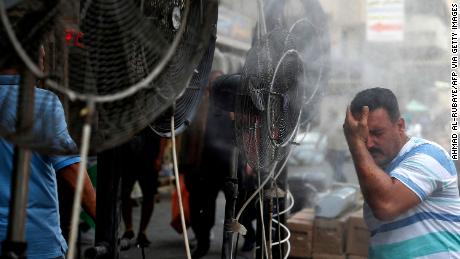Unprecedented heat, hundreds dead and a town destroyed. This is the reality of climate change.
Lytton hit 49.6 degrees Celsius (121.3 degrees Fahrenheit), astounding for the town of just 250 people nestled in the mountains, where June maximum temperatures are usually around 25 degrees. This past week, however, its nights have been hotter than its days usually are, in a region where air conditioning is rare and homes are designed to retain heat.
Now fires have turned much of Lytton to ash and forced its people, as well as hundreds around them, to flee.
In India, tens of millions of people in the northwest were affected by heat waves. The Indian Meteorological Department on Wednesday classified the capital, New Delhi, and cities in its surrounds as experiencing “severe extreme heat,” with temperatures staying consistently in the 40s, more than 7 degrees higher than usual, it said. The heat, along with a late monsoon, is also making life difficult for farmers in areas like the state of Rajasthan.
And in Iraq, authorities announced a public holiday across several provinces for Thursday, including the capital Baghdad, because it was simply too hot to work or study, after temperatures surpassed 50 degrees and its electricity system collapsed.
Experts who spoke with CNN said it was difficult to pinpoint exactly how linked these weather events are, but it’s unlikely a coincidence that heat waves are hitting several parts of the northern hemisphere at the same time.
“The high pressure systems we’re seeing in Canada and the United States, all of these systems are driven by something called the jet stream — a band of very strong winds that sits way above our heads, at about 30,000 feet where the planes fly around,” Liz Bentley, Chief Executive at the UK’s Royal Meteorological Society, told CNN.
Bentley explained the configuration of the jet stream is preventing weather systems from moving efficiently along their normal west-to-east path.
“That jet stream has become wavy, and it’s got stuck in what we call an Omega block, because it’s got the shape of the Greek letter Omega, and when it gets in that, it doesn’t move anywhere, it blocks it,” Bentley said. “So the high pressure that’s been building just gets stuck for days or weeks on end, and these Omegas appear in different parts of the northern hemisphere.”
In the US, the same thing happened in mid-June in the Southwest, breaking records in Mexico and places like Phoenix in Arizona. A couple weeks later, a dome of high pressure built over the Northwest, toppling records in Washington, Oregon and southwest Canada.
“So we’ve seen these unprecedented temperatures — records being broken not just by a few degrees, being absolutely smashed,” Bentley said.
Scientist says this could happen every year by 2100
There is a growing acceptance among some political leaders that climate change is a driving force behind fueling many extreme weather events, particularly for heat waves and storms.
Scientists are working on sophisticated tools that can rapidly assess just how much climate change may have contributed to a particular weather event.
“We carried out a quick attribution study to get some fast answers to ‘What is the role of climate change?'” said UK Met Office meteorologist, Nikos Christidis, who has been developing simulations to carry out such analysis.
“We found that without human influence, it would be almost impossible to hit a new record and such a hot June in the region,” he said, referring to an area including those affected in Canada and the US.
Christidis said in the past, without human-caused climate change, extreme heat in the Northwest US or Southwest Canada would have occurred “once every tens of thousands of years.” Presently, it can occur every 15 years or so, Christidis said.
And if greenhouse gas emissions continue? Christidis said as often as every year or two by the turn of the century.
Several countries, including the US, United Kingdom and those in the European Union, recently increased their commitments — some by a long way — but many scientists and activists say they still don’t go far enough to keep global average temperatures within 1.5C above pre-industrial levels. World leaders pledged in the 2015 Paris Agreement to aim for this limit in order to stave off the more most catastrophic impacts of climate change.
Climate groups have also urged Canada to increase its commitments and wean itself off oil and gas.
“This is literally the deadliest weather on record for the US Pacific Northwest and far southwest Canada region. The losses and the despair as a result of the extreme heat and devastating fires in Canada are a reminder of what’s yet come as this climate crisis intensifies,” said Eddy Pérez, Climate Action Network Canada’s manager for international climate diplomacy.
“Canada is experiencing historic climate-induced losses and damages while at the same time not doing its fair share to combat dangerous climate change. As an oil and gas producer, Canada is still considering the expansion of fossil fuels which is directly attributed to the global temperature rise.”
CNN’s Anna Chernova contributed to this report from Moscow and Manveena Suri contributed from New Delhi.
![]()








